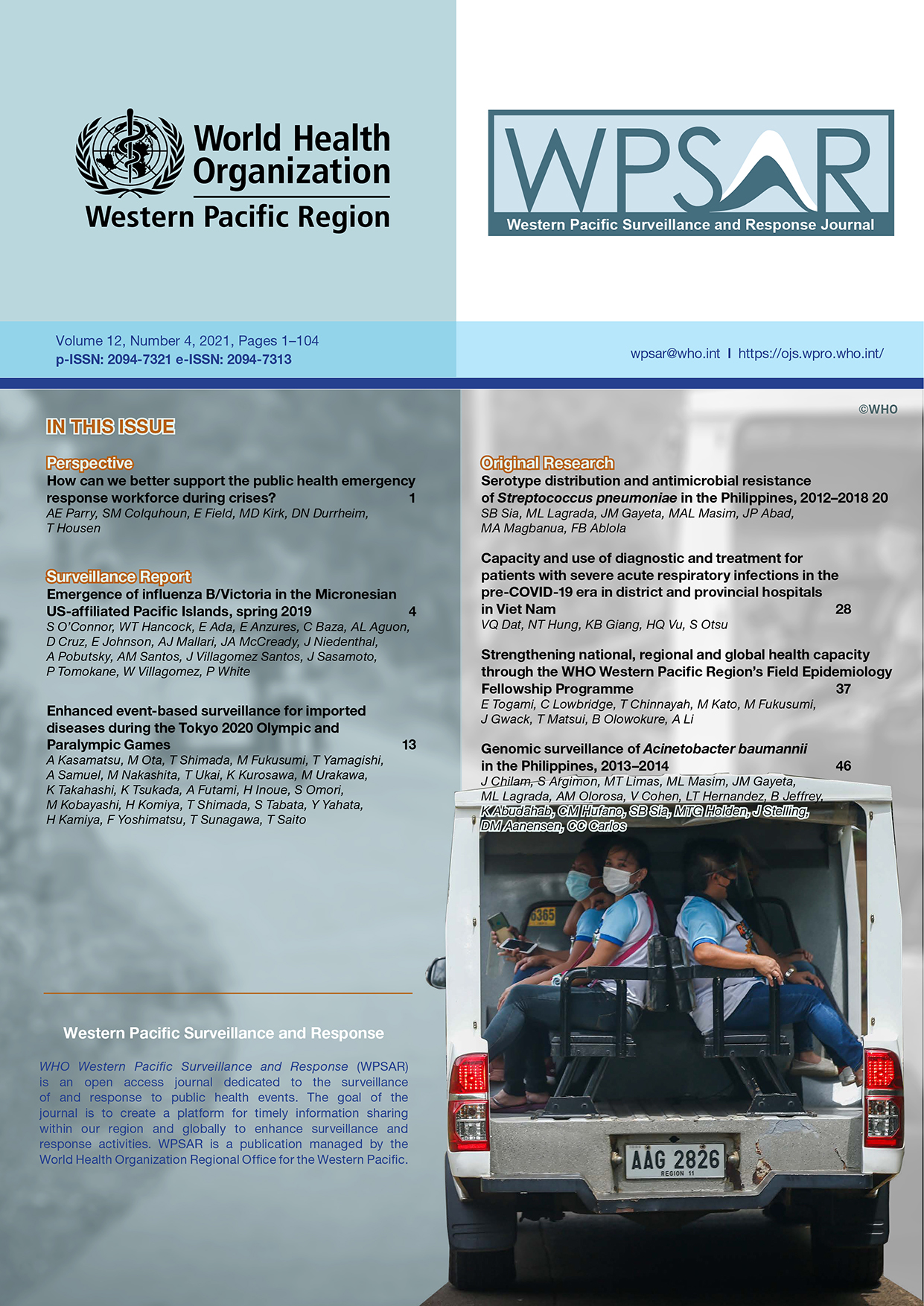COVID-19: Integrating genomic and epidemiological data to inform public health interventions and policy in Tasmania, Australia
DOI:
https://doi.org/10.5365/wpsar.2021.12.4.878Abstract
Objective: We undertook an integrated analysis of genomic and epidemiological data to investigate a large healthcare-associated COVID-19 outbreak and to better understand the epidemiology of all COVID-19 cases in Tasmania, Australia.
Methods: Epidemiological data collected on COVID-19 cases notified in Tasmania between 2 March and 15 May 2020, and positive SARS-CoV-2 samples or extracted RNA from those cases, were included. Sequencing was conducted by tiled amplicon PCR using ARTIC v1 or v3 primers and Illumina sequencing. Consensus sequences were generated, sequences were aligned to a reference sequence, and phylogenetic analysis performed. Genomic clusters were determined and integrated with epidemiologic data to assess any additional insights.
Results: All COVID-19 cases notified in Tasmania during the study period (n=231) and 266 SARS-CoV-2 positive samples, representing 217/231 (94%) of notified cases, were included in the study; 182/217 (84%) were clustered, 21/217 (10%) were unique, 12/217 (6%) could not be sequenced. Genomics confirmed the presence of seven epidemiological clusters, clarified transmission networks where epidemiology was unclear and additionally identified another genomic cluster which had not been identified by epidemiology alone.
Discussion: Genomic analysis provided useful additional information on COVID-19 in Tasmania including evidence of the probable source of infection in cases where epidemiological links had not been identified and that the source of a large healthcare-associated outbreak was an overseas cruise. Genomic analysis also confirmed there was no identified community transmission from other imported cases. Genomic insights are an important component in responding to COVID-19 and ongoing genomic surveillance is warranted.

